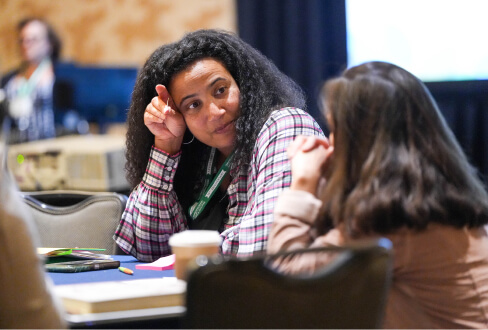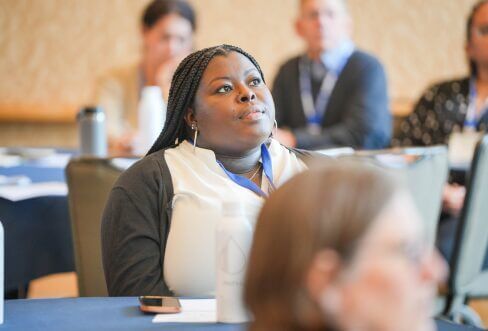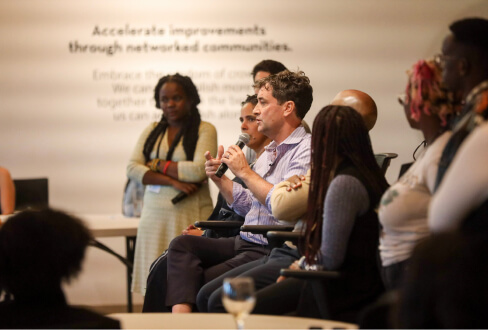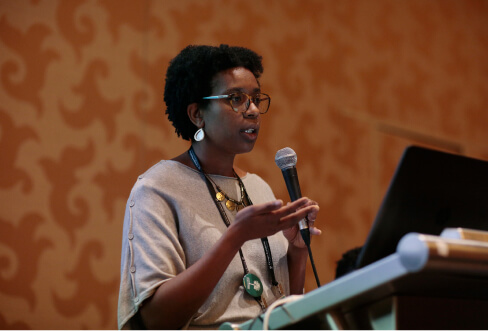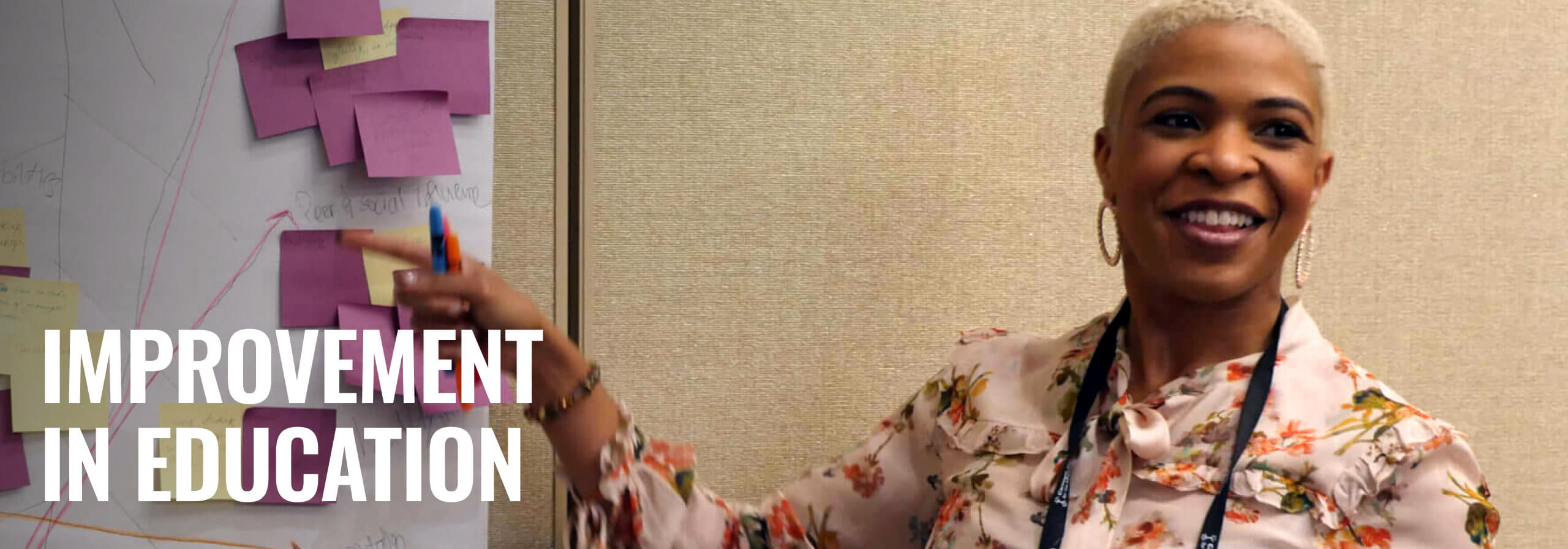
- Postsecondary Innovation
- Future of Learning
- Measuring What Matters
- Improvement in Education
Improvement in Education
Advancing the Use of Improvement Science to Pursue Equitable Outcomes.
Carnegie has further developed and championed a science of improvement to help educators and systems get better at getting better, and to enable all students to thrive. Improvement science puts real problems of practice at the center, and acknowledges the role systems play in determining outcomes. It respects and integrates the knowledge of educators, families, and students – recognizing they are the central actors in any successful effort to improve teaching and learning. And it activates the agency of all stakeholders to work together, guided by inquiry and evidence, to improve outcomes reliably and at scale. Through testing innovations, refining, and testing them again, improvers transform systems and make progress on the most persistent challenges in education.
In its efforts to advance the high quality use of improvement science, Carnegie Foundation seeks to:
- With our partners, leverage improvement science and networked improvement communities to make progress on the most persistent educational equity challenges facing communities.
- Build evidence that improvement science generates results for young people and deepen the knowledge base to enable large-scale, equitable improvement.
- Support widespread, effective use of improvement and networks by increasing access to learning experiences, resources and tools.
- Grow and strengthen the improvement community across the globe.
ORGANIZING AS NETWORKS
The most effective and efficient way to organize improvement efforts is through networked improvement communities (NICs), a colleagueship of expertise that builds on the hard work and creativity of the collective. NICS are intentionally designed social organizations, each with a distinct problem-solving focus. They maintain narratives that exemplify what they are about and why it is important to affiliate with them.
As a scientific learning community, each NIC is focused on a well-specified common aim; guided by a deep understanding of the problem, the system that produces it, and a shared working theory to improve it; disciplined by the methods of improvement research to develop, test, and refine interventions; and organized to accelerate interventions into the field and to effectively integrate them into varied educational contexts.
PREVIOUS IMPROVEMENT WORK
Building a Teaching Effectiveness Network
The Building a Teaching Effectiveness Network brought together leaders in education practice, policy, and research to improve the development and retention of effective teachers in our nation’s schools. Working with school districts, BTEN focused on the needs of new teachers in urban schools as they learned to teach students well, collaborate with colleagues, engage families, and successfully navigate the policies and routines of their districts and schools. Through rapid, small-scale testing, principals and beginning teachers addressed feelings of burnout and increase confidence by developing a feedback protocol. In addition, BTEN worked to improve district systems and processes that support new teacher development.
California County Offices of Education
At the request of California’s County Offices of Education (COEs), Carnegie designed and delivered professional development institutes on the application of improvement science in education. The COEs used improvement science to help the districts in their counties implement the ESSA improvement requirements. 53 of 58 county offices participated in the institutes.
Carnegie Math Pathways
Carnegie Math Pathways (CMP) is a network with the aim to accelerate students’ progress through their developmental mathematics sequence and a college-level course for credit. CMP devised two new pathways, Statway and Quantway, to reduce the time required to earn college credit while improving the content and pedagogy of developmental mathematics. These Pathways present engaging, relevant, and useful mathematics concepts that students can use in their daily lives. Statway and Quantway are taught using common curricula, assessments, online platforms, and innovative instructional approaches. The CMP network is now housed at WestEd.
CORE Districts (CORE)
Carnegie entered into a technical assistance partnership to provide training and coaching to the CORE Districts in California. The CORE districts formed a NIC focused on the gaps in achievement, particularly for males, between minority and majority students. CORE served as hub to this effort and defined and carried out its activities with the Foundation’s coaching and advice.
Early Literacy Meta-Network (ELMN)
The Early Literacy Meta-Network convened a set of networked improvement communities (NICs) to explore how a “network of networks” (or meta-network) can be mutually reinforcing and educative so as to accelerate learning and the spread of knowledge on what is a widely recognized high-leverage problem of practice: exiting grade three with the reading and literacy skills necessary to participate fully as a learner in school.
Getting Better, California (GBC)
Carnegie supported the Tennessee Department of Education (TDOE) to form the Tennessee Early Literacy Network (TELN). TELN was comprised of networked improvement communities led by the state’s regional offices that focused on improving literacy outcomes in the primary grades. The effort brought districts together to collaborate on improving early reading, and sought to shift how the TDOE empowers and builds the capacity of regions and districts to problem solve, find better solutions, and improve student achievement in their own unique contexts.
New York Hall of Science
Supported by a planning grant from the National Science Foundation, this effort explored the establishment of a networked improvement community comprised of museums, science centers, and other “out of school” learning environments. It sought to employ maker methods to promote students’ interest in and engagement with mathematics and science.
Pacific Regional Educational Laboratory
Carnegie partnered with McREL, the prime contractor for the Pacific Regional Educational Laboratory, to provide technical expertise and professional training, coaching, and other supports for networked improvement communities throughout the Pacific region focused on college and career readiness.
Reading Recovery
Reading Recovery is one of the oldest, most mature, and most successful programs for addressing the needs of children encountering difficulties with the development of their reading and literacy skills. The Foundation assisted them in using improvement tools and processes (such as problem study, systems analysis, and the articulation of a theory of practice improvement) to address two problems: declining knowledge of and engagement with RR by practicing professionals, and high levels of variability in practice and outcomes, even with well-articulated professional development and support systems.
Student Agency Improvement Community
Student Agency Improvement Community (SAIC) was a network of six networked improvement communities (NICs), each with its own aim and community. Each member NIC explored the implementation of a set of practices focused on promoting growth mindsets, a sense of belonging (in school and as a learner), an appreciation for and valuing of the content to be learned, and the use of effective learning strategies. The purpose of these practices and routines was to promote the psychosocial factors that influence student motivation, therefore engagement, therefore success in school.





